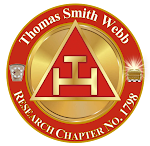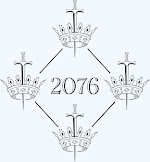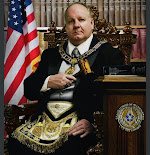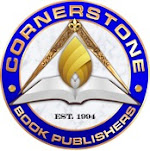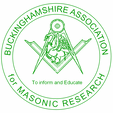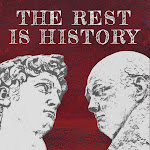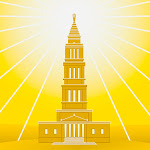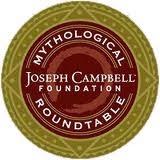 |
Almost everybody in attendance last night
at The American Lodge of Research. |
Research lodges typically don’t get a lot of glitz (it’s safe to say we prefer that) but, twenty-four hours ago, The American Lodge of Research had five grand masters partaking in our celebration of the moment in 1824 when the Marquis de Lafayette was knighted a Templar.
The ALR concluded New York Freemasonry’s celebration of the bicentenary of Lafayette’s farewell tour of the United States, sponsored by the Masonic Order and heavily involving New York. We assembled, appropriately, inside the Colonial Room but, admittedly, this was not exactly the meeting we planned, as fate interfered and kept a special guest from joining us. It was a full evening anyway. Our keynote speaker was David Dixon Goodwin, Past M.E. Grand Master of the Grand Encampment of Knights Templar, who explained the early history of Chivalric Masonry in the United States.
 |
| Yves and David. |
Actually, he began with a recapitulation of the story of the medieval Knights Templar, careful to point out how none of that connects to the modern Masonic Templars, but that “we represent the same values in today’s world.” My takeaway is the KT story in America follows a seemingly boilerplate trajectory we know from Masonry here generally. A whiff of a trace of ritual is in one record in the 1780s. Before you know it, there’s a grand encampment in one state, Pennsylvania being first in this case. Then other states. Big names get involved, such as Thomas Smith Webb, DeWitt Clinton, and Joseph Cerneau. Cerneau’s presence confounds orthodox enforcers of recognition rules (like the Pennsylvanians, I’d say). Then a move to establish a national structure, called the General Grand Encampment gains popularity, albeit without Pennsylvania’s support initially. And then, the grand commandery system we know today is birthed and spreads from six such bodies in 1827 to forty-three in 1900—despite Masonry’s ups and downs during the nineteenth century—to more than sixty today.
The part of the meeting diminished by circumstance was to be a display of Masonic regalia connected to Lafayette. Livingston Library Executive Director Michael LaRocco was scheduled to return to The ALR to exhibit the apron Morton Commandery 4 is believed to have presented to Lafayette, but he was unable to join us. Thanks to Worshipful Master Yves Etienne, we did get to see one of twelve silver chalices used in KT’s ritual libations that dates, at least, to this Lafayette visit to New York.
 |
Columbian Commandery silver chalice used
when Lafayette was made a Sir Knight in 1824. |
No way of knowing if the great man drank from this particular goblet, of course, but it was used in the historic ceremony that day more than two centuries ago.
The lodge was blessed with more than the usual showing of visitors. The Most Worshipful Steven A. Rubin, Grand Master of Masons in the State of New York, was accompanied by Grand Treasurer Alberto Cortizo, Senior Grand Deacon Gustavo Teran, Grand Historian Pierre de Ravel d’Esclapon, and Grand Marshal Peter Unfried. Two exceptionally special guests, who sojourned further than from several floors above, were Most Serene (I hope I have that correct!) Malerbe Jacquet, Grand Master of the Grand Orient d’Haiti, who was accompanied by Gaétan Mentor, Past GM of the Grand Orient.
If you’re keeping score, we’re up to four (4) grand masters.
The Worshipful Master is keen on introducing dignitaries and permitting time for their remarks—and presenting gifts. Past Grand Master Bill Sardone, also a PGM of DeMolay International, (five GMs now) was escorted to the East for brief comments, which he always manages to craft with good humor.
 |
| Our Worshipful Master gives lots of gifts. Last night our distinguished guests received plaques commemorating the evening. Here, MW Bill Sardone receives his. |
In addition, he too spoke of medieval Templar history, recollecting the discovery in 2001 by a Vatican archivist of the fourteenth century trial transcripts and other documents from the prosecution of the military order, and how a collection of reproductions of those documents are in the Livingston Library. (It was exactly seventeen years ago when The ALR hosted the unveiling of those impressive facsimiles next door in the French Ionic Room. A memorable meeting!)
 |
| Grand Master Jacquet with Past GM Mentor. |
Past Grand Master Mentor, continuing on Templar thoughts, explained that “the Templar ideal is not conquest, but is the mastery of the self” and displays faith and action intertwined. Grand Master Jacquet, speaking French and interpreted by Mentor, spoke of Lafayette as he is known as “The Hero of Two Worlds,” explaining how the Marquis earned that appellation for his role in both the American and French revolutions. Jacquet reminded the brethren (sometimes we forget) of Haiti’s own revolt, gaining independence from France at the close of the eighteenth century.
 |
| MW Steven A. Rubin |
Always the final speaker in any setting, Grand Master Rubin congratulated the lodge on its efforts in education, and described how the revamped Masonic University and other recent initiatives can cooperate with The ALR and the Livingston Library to help Masons gain a deeper understanding of the meaning of Masonry.
In other news, the backdoor of Masonic Hall again is closed to traffic. The next Stated Communication of The ALR will be next March on a date to be determined. And there is a new research lodge in the works! To be named Veritas, it will focus on Masonic philosophy, rather than history, and I look forward to sharing more information as it becomes available.
























